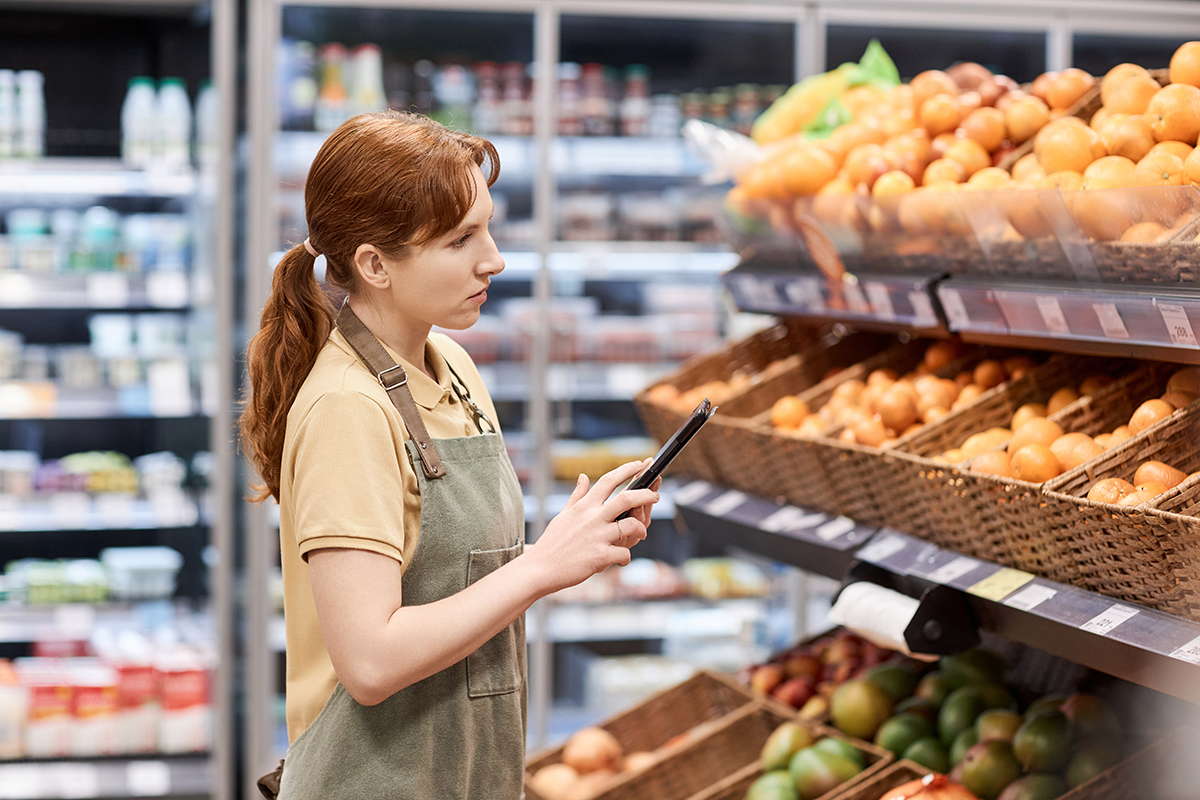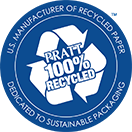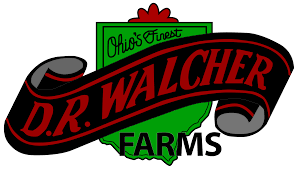Today, San Francisco-based technology company Afresh revealed its biggest product launch in the company’s history: the Fresh Store Suite, a collection of solutions that gives grocery teams a unified system for managing fresh tasks — from inventory management and demand forecasting to ordering and production planning — across produce, meat, seafood, deli, bakery and prepared foods.
Afresh CEO Matt Schwartz gave The Packer an advance look at the tech behind the new tools ahead of the suite’s debut at Groceryshop.
“We started Afresh with the deep conviction that fresh food is the strategic heart of the grocery industry — things like produce but also meat and seafood, deli, bakery, prepared foods — that are driving where people choose to shop and are what differentiate a brick-and-mortar grocer from online competitors,” Schwartz says. “And at the same time, we observed that most of the technology that was built for the grocery industry was not built for fresh. It was built for center store.”
Schwartz says Afresh changed that when it introduced its Fresh-First ordering solution that’s now live in more than 10,000 store departments across the country, with grocers including Albertsons, Meijer, Fresh Thyme, Brookshire’s, and Stater Bros.
Today’s introduction of the Fresh Store Suite is built on Afresh’s AI technology and introduces new solutions for production planning and period ending inventory. With the launch of the Fresh Store Suite, Afresh’s flagship Fresh Replenishment product has also been enhanced to deliver faster, more automated decision-making, according to the company.
It is now available on iOS, Android, web, mobile, and scanner devices, and can now also directly integrate with existing retail systems. Together, these solutions make up the Afresh Platform, which Schwartz says is designed to transform and modernize fresh operations.
“Together, this suite of solutions provides an end-to-end optimization and operations toolkit for fresh department teams across their ordering, production planning and inventory workflows,” says Schwartz, who anticipates the suite will “maximize profitability and fight food waste on a scale the industry has never seen.”
Time to Count the Pineapples
How do these solutions support fresh produce?
Schwartz says Afresh’s Fresh Replenishment can, for example, optimize the decision of how many pineapples to order into the store, how many are needed to cut for value-add and more.
“That’s a challenging decision for a grocer. Pineapples are hard to track. The data is messy, often without UPCs. They could be sold by weight or each pineapple, and they are highly perishable,” he says. “They also ripen in different ways, so there’s a lot of optimization that can go into ordering the right number of pineapples into the store to maximize sales while minimizing waste and shrink.
“Our core ordering solution addressed these issues, and we’re now building off of that capability to launch production planning, which then helps grocers optimize the decision of how many pineapples to cut into fruit bowls, pineapple wedges or spears, as well as how many to cut into rings that might go into a barbecue grill kit for the meat department,” Schwartz adds. “This solution then takes the same AI-powered forecasting skills and inventory management skills that we have and brings them into the next decision of production planning.”
The technology also eliminates the need for grocers to manually audit their inventory position on every fresh item for financial and shrink tracking purposes, Schwartz says.
“Our solution dramatically streamlines that process, both in its accuracy and its efficiency,” he says. “The store replenishment solution is making that recommendation every day on every item in the department. Here’s how much to order: Eight cases of pineapples, nine cases of broccoli, five cases of this salad kit, etc.”
Schwartz says taking inventory has traditionally been a time-consuming task.
“It would take upward of two people 10 hours overnight to count everything in the store and meticulously rack it. We can reduce that time nearly in half,” he says.
Afresh technology uses an AI algorithm based on transaction-level sales on a near-term and historical basis to determine how much of each item a store needs to order day to day.
“We look at the day of the week, day of the month, day of the year, holiday information. We also take in external sources of data, like when food stamps become available and what’s the pattern of buying driven by that,” Schwartz says. “We look at promotions, price changes, different elements of seasonality — all of that informs some of the demand forecasting.
“In addition, we get the shipment data, so we understand how much is being shipped from the distribution center to the store, and that mix of the sales information, the shipment information, pricing, promotion, etc., helps us do not only demand forecasting but also the maintenance and understanding of inventory position in the store and recommendations of what to order,” he continues.
Afresh’s Fresh Store Suite also offers cross-department AI optimization that connects data across fresh departments to coordinate smarter decision-making — from daily ordering and production to distribution — intended to ensure inventory is in the right place at the right time while improving labor efficiency.
Waste Reduction
For most grocers, Afresh is bringing together hundreds of millions or billions of data points to inform these decisions, says Schwartz, with the goal of helping them keep the shelf as close to full as possible while having the backroom as lean as possible.
“When the next truck comes in, you want to be full on the shelf to drive sales but not so full that you are driving waste, and so that’s what the system is optimized to do,” he says. “We’ve seen, as a result, around 25% waste and shrink reduction with our customers and a 1% to 3% sales lift with an 80% reduction in their out of stocks, as well as major benefits to their working capital and a reduction to how much inventory they’re carrying.”
Schwartz says a boost to profits comes from reducing shrink. Together with its partners, Afresh says it has prevented over 100 million pounds of food waste while driving business results, such as 25% shrink reduction, sales uplift and higher inventory turns.
Key Components of Fresh Store Suite
Afresh says its Fresh Store Suite introduces new and enhanced solutions that transform how grocers manage fresh operations, including:
- Fresh Replenishment. The next generation of Afresh’s inventory management, demand forecasting and ordering solution. With key enhancements to Intelligent Inventory, stores can cut time-consuming full-department item counts and order 50% faster, saving valuable time and labor, according to the company. It’s now available on Android, iOS, mobile and web.
- Replenishment API. A fully back-end version of Fresh Replenishment that integrates directly into a retailer’s existing systems, enhancing their existing front-end system with Afresh’s order intelligence — without requiring new devices.
- Production Planning. A new solution that extends Afresh’s AI to in-store production operations, providing associates with precise production plans that specify what to make, when and in what quantity. From fruit bowls to bakery items to hot bar dishes, this reduces guesswork, prevents overproduction and ensures product availability.
- Period-Ending Inventory. This new solution streamlines the labor-intensive month-end counting process using inventory data from Fresh Replenishment. Instead of starting counts from scratch, teams simply verify Afresh’s Intelligent Inventory, saving hours of overtime while improving accuracy, according to the company.
Afresh says these solutions combined put AI at the center of the most complex and labor-intensive decisions in fresh, allowing associates to focus on maintaining high-quality displays and delivering excellent customer service.
Labor-Saving Solution
Schwartz says he sees two major trends driving the need for Afresh technology: One is grocers leaning into the fresh in-store experience to differentiate in the highly competitive grocery marketplace, and the second is labor constraints and high turnover at retail.
“Maintaining good labor in the store is harder than ever with turnover and those 40-year, 50-year veterans of produce who just aren’t there anymore,” he says. “You have to have a system that will work with the kid who’s just out of high school or someone that’s coming from a different department.
“[Grocers are saying,] ‘we need to be the highest service business that we’ve ever been before but do that with the least trained labor and the most efficiency that we’ve ever had before,’” Schwartz continues. “So, that’s how we’ve designed our solution — to enable anybody to be successful in navigating these really complex decisions.”



















